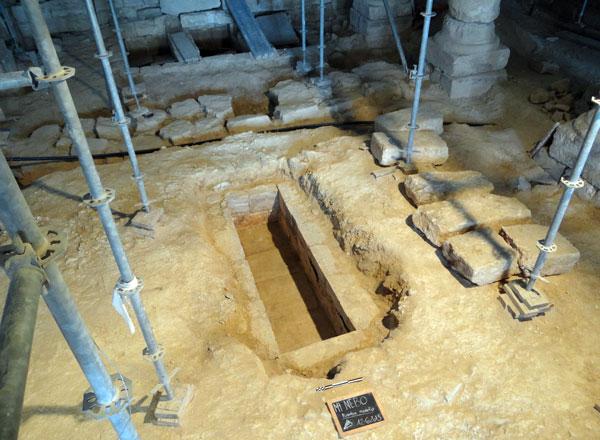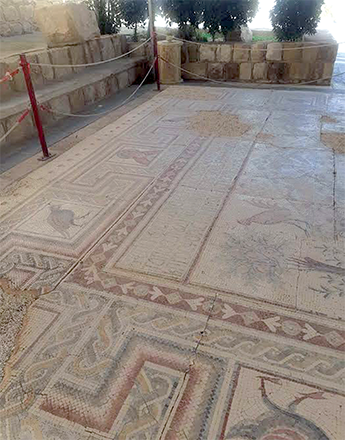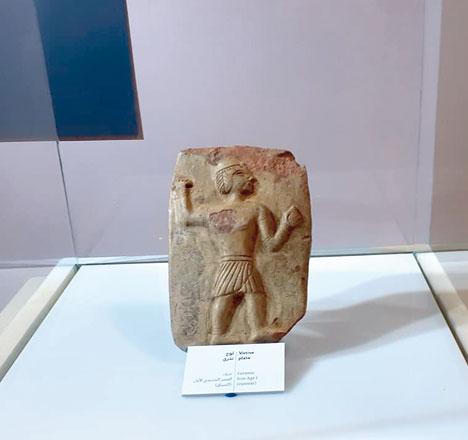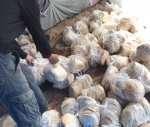You are here
German scholar explores Jordan’s ancient monasteries
By Saeb Rawashdeh - Oct 08,2017 - Last updated at Oct 08,2017
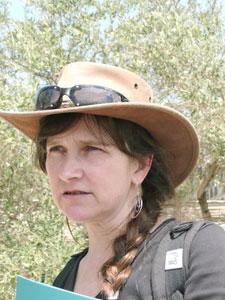
Jutta Häser
AMMAN — The oldest known monastery in Jordan is on Mount Nebo, a place which the Roman female pilgrim Egeria visited at the end of 4th century AD, said Jutta Häser, who received her PhD at Free University of Berlin in 1998.
“We know about around 15 monasteries in the Byzantine period all over Jordan but probably there were more,” the German archaeologist, specialising in Near Eastern Archaeology, noted.
Monasticism came from Egypt to Jordan, she explained, adding that monastic communities must have been an important part of society in the Byzantine period like in other regions.
However, since we have only very few excavated sites and even less historical sources, it is hard to assess their relevance, Häser told The Jordan Times in a recent e-mail interview.
“Most of the monasteries we know can be dated to the 5th to 7th century,” she continued, noting that “we know some sites by mosaic inscriptions which existed till the early 8th century”.
The end of monasticism was caused by probably several reasons, she explained.
“In the middle of the 8th century, the dynasty of the Umayyads was replaced by the Abbasids. During the following centuries, Islam increased throughout the region and regulations like the exclusion of Christians from high-ranking positions or wearing special clothes led Christians to conversion,” Häser explained.
According to the German expert, there were many controversial directions in the Christian community which led to a schism.
Nowadays, there are three monasteries: St Gerasimos of Jordan close to the Baptism Site, the Franciscans on Mount Nebo and a group of Argentinean sisters in Anjara, the scholar said.
To better understand the monastic life in Jordan, different primary sources and material evidence are necessary, so in 2014, a mosaic inscription was rescued on Tell Ziraa, near Umm Qais in northern Jordan.
“It was written in Greek with Greek characters. Since it was damaged, it remained only in parts,” she added.
Italian scholar Andrea Zerbini dates the inscription to the year 709AD, Häser stressed, noting that another suggestion was made by Professor Niehoff, who dates it to the year 548AD.
“The difference comes about the era used for determination, while archaeologically both dates are possible,” she noted.
However, the inscription shows that monks built or renovated the building wherein the mosaic was found.
“At the actual state of research, I think that we are dealing with a monastic complex; there are other building complexes of the same period on Tell Ziraa probably belonging to the monastery as well,” she highlighted.
It is the largest monastic complex excavated in northern Jordan comparable to the one in Jabal Harun, the archaeologist pointed out.
“Since there are many finds like pottery and glass vessels, stone and metal tools, we can reconstruct the daily life in such a community,” Häser added.
Scholars can learn what monks ate and this information is also confirmed by the analysis of the animal bones found in the layer, she emphasised.
“We can learn if they produced pottery by their own or if they imported it. If they have imported objects we can see from where these objects came from and the contacts these people had,” the researcher said.
From the stone objects — especially from the mills and rubbing stones — researchers can see how they managed their life by agriculture (e.g. cereals, olive and wine), she underlined, adding that “if you have a lot of imported objects, the people on the hill must have something for exchange [e.g. wine and olive oil]”.
“The building material and the workmanship show us if people were poor or rich,”Häser added.
Regarding the future plans, the archaeological team would like to publish the results of the excavations conducted until 2011, which will take another two years, she noted.
Related Articles
AMMAN — Latest excavations from Mount Nebo provide new elements related to the architectonical evolution of the basilica of the Memorial of
AMMAN — During the 3rd century AD, monks established the first monastic centres in the Levant, drawn to this region for its suitability for
IRBID — After being on display at the Jordan Museum from July through December 2019, the exhibit "Tall Ziraa — Mirror of Jordan’s Anci


